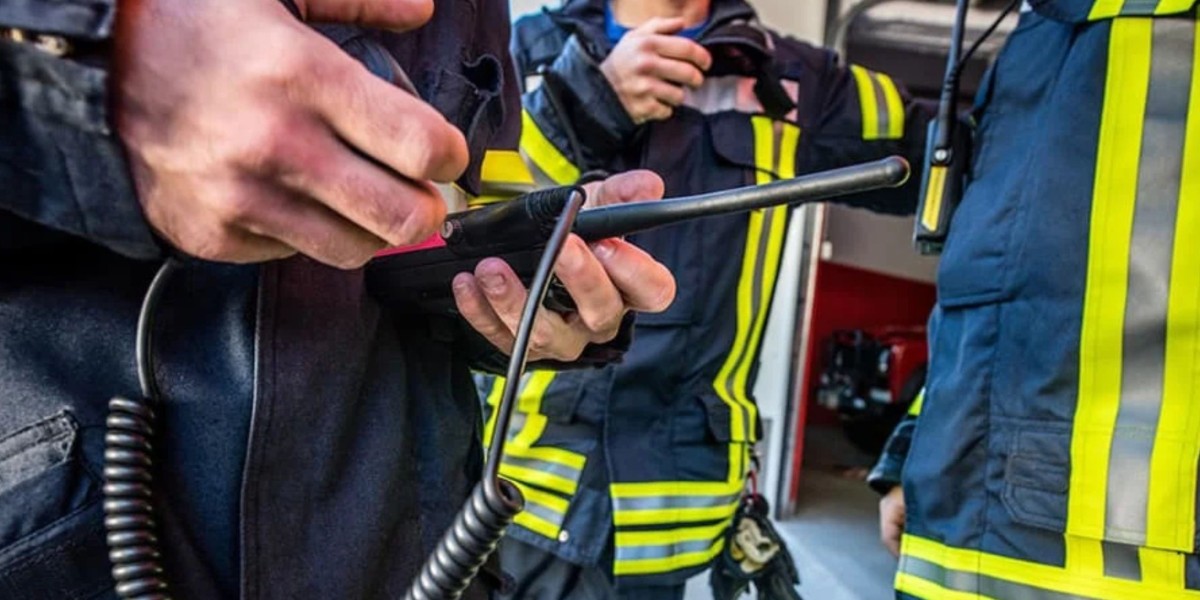In an emergency, clear and reliable communication can save lives. Firefighters, police officers, and emergency medical teams rely on strong signals and uninterrupted communication to do their jobs effectively. One of the most critical tools that supports this is the emergency responder radio communication system. This system ensures that first responders can stay connected inside buildings, underground garages, and other challenging environments. However, the system's success depends on more than just its basic setup. To function properly at all times, it also needs an antenna monitoring system.
What Is an Emergency Responder Radio Communication System?
An emergency responder radio communication system (ERRCS) is a specially designed radio network that improves signal strength for first responders inside buildings. Many modern structures, especially those made from concrete, steel, or with energy-efficient windows, block radio signals. This interference can prevent emergency crews from communicating with each other or with their command centers during crises.
To solve this problem, ERRCS installations use a combination of:
Bi-directional amplifiers (BDAs)
Distributed antenna systems (DAS)
Signal boosters and repeaters
Indoor antennas placed strategically throughout the building
With this setup, emergency responders can communicate clearly, even in stairwells, elevators, and underground areas.
The Role of Antennas in ERRCS
Antennas are the backbone of any radio communication system. In an ERRCS, antennas are installed in multiple zones across a building to ensure that signals can be both sent and received. These antennas distribute radio signals from a central amplifier to every part of the structure.
If an antenna fails or becomes disconnected, the entire communication system can weaken—or even fail—at critical moments. Unfortunately, antenna problems are not always easy to detect. That’s why regular checks and constant monitoring are necessary to keep the system working smoothly.
What Is an Antenna Monitoring System?
An antenna monitoring system is a tool that tracks the performance of antennas within a communication setup. It checks for any disruptions, damage, or disconnections in real time and alerts system managers when something goes wrong.
These monitoring systems can:
Measure signal strength across each antenna
Detect cable or connector faults
Identify damaged or unplugged antennas
Send instant alerts if performance drops
Provide reports for system maintenance and compliance
By constantly watching the system's health, antenna monitoring systems help ensure that communication lines stay open during emergencies.
Why ERRCS Requires Antenna Monitoring
Combining an emergency responder radio communication system with an antenna monitoring system isn't just helpful—it’s essential. Here’s why:
1. Instant Detection of System Failure
Without a monitoring system, building owners or maintenance teams may not know an antenna is malfunctioning until an emergency occurs. That delay can lead to life-threatening communication gaps. With antenna monitoring, issues are identified immediately, and corrective action can begin without delay.
2. Regulatory Compliance
Many cities and counties now require ERRCS installations in large commercial and residential buildings. In addition, local fire departments and building codes often demand ongoing monitoring and system certification. Installing an antenna monitoring system helps property owners meet these legal and safety requirements.
3. Reduced Maintenance Costs
Regular manual inspections take time and require trained professionals. An antenna monitoring system cuts down on unnecessary checks by giving real-time data. This means maintenance teams can focus only on antennas that show signs of trouble, saving time and money.
4. Increased Safety for Occupants and First Responders
A reliable ERRCS gives emergency crews the ability to communicate during fires, earthquakes, or security threats. When antennas are continuously monitored, responders can trust the system to work exactly when it's needed most. This enhances the safety of both the building's occupants and the emergency personnel.
Real-World Risks of Skipping Antenna Monitoring
Consider a high-rise office building that installs an emergency responder radio communication system without an antenna monitoring system. Over time, one of the antennas in the stairwell becomes loose due to vibrations from nearby construction. No one notices the problem until a fire breaks out on the top floor. As firefighters attempt to communicate, they lose signal strength in the stairwell. This delay leads to confusion, putting lives at risk and slowing down the emergency response.
Had an antenna monitoring system been in place, the loose antenna could have been detected earlier, and a technician could have repaired it before the emergency occurred.
Key Features to Look for in an Antenna Monitoring System
If you're planning to install or upgrade your ERRCS, it’s important to choose an antenna monitoring system with the right features. Look for systems that offer:
Continuous signal monitoring across all antennas
Automated alerts via email or messaging systems
Detailed performance reports and system logs
Compatibility with existing DAS or ERRCS components
Easy integration with building management systems
The goal is to make system management easier, not more complicated, so user-friendly designs and automated functions are a big plus.
Implementation and Maintenance
Installing an antenna monitoring system is usually straightforward, especially if the ERRCS is already in place. It involves connecting sensors and monitoring equipment to each antenna or antenna cable and setting up the system’s control panel.
After installation, regular software updates and data reviews help ensure that the system stays accurate and functional. Some systems even offer cloud-based dashboards so that building managers and safety officers can monitor performance from anywhere.
Conclusion
Keeping people safe during emergencies depends on clear, uninterrupted communication. The emergency responder radio communication system plays a vital role in making sure that first responders can stay in contact, even in the most challenging environments. However, to keep this system running at its best, every part of it—especially the antennas—must be in good working condition. By adding an antenna monitoring system, property owners can detect problems before they become serious, reduce downtime, and meet safety regulations with confidence.
Investing in this technology is not just about following codes—it’s about making sure that when an emergency strikes, help can reach every corner of the building without delay. That level of preparation can make all the difference when every second counts.



